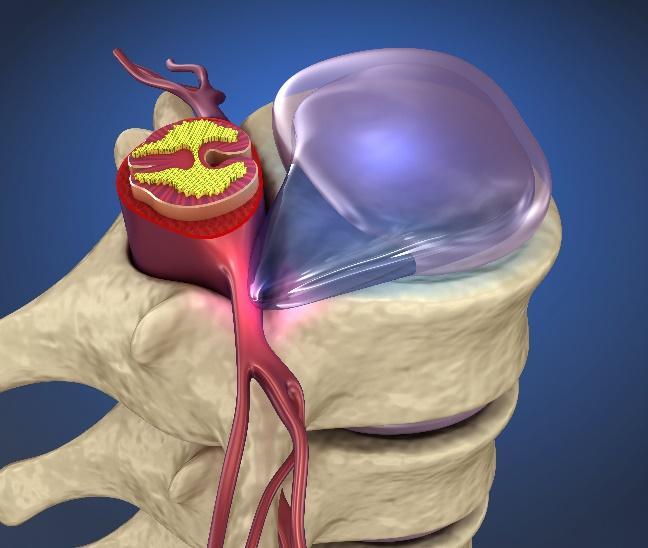Decreased Spinal Curvature Doubles Risk of Disc Herniations

Corrective Chiropractic care improves movement in the spine, alignment of vertebra, and function of the central nervous system. The process helps the spine becomes stronger and more able to cope with stress. Brand new research reveals the consequences of abnormal spinal alignment on the health and integrity of the spine. Alteration of spinal curvature and alignment increases the amount and degree of spinal degeneration and the presence of disc herniation.
A disc herniation defines as a protrusion of the nucleus pulposus or annulus fibrosis of the disk, which may impinge on nerve roots. A simpler definition states that disc herniation takes place when a small tear occurs to the disc and a jelly-like material partially squeezes out. Sometimes the protrusion will impinge a nerve root and cause significant pain. Many herniations develop like cavities in teeth. Little to no pain and discomfort present until the advanced stages of existence. Disc herniations always lead to instability in the spinal segment and further the degenerative process if the alignment and function remain uncorrected. Chiropractic care improves and reduces disc herniations by increasing motion and alignment of the spinal curvature.
Spinal alignment plays an important role in the health and longevity of the spine and intervertebral discs. A spinal disc consists of cartilage and water and serves as protection and padding between two spinal vertebrae. Proper spinal alignment makes the spine stronger and more durable, capable of withstanding pressure and stress. The neck curvature, also known as the cervical lordosis, also serves a vital role. The neck curve proves essential for maintaining balance and motor function and helps maintain the stability of the spine. The neck curve cushions the vertebra by allowing the appropriate room for each disc to move without stress. The essential load-bearing function makes the neck curvature a predominant area for disc degeneration and herniations.
Abnormal neck curvature represents an early manifestation of degenerative changes in the spine. Lifestyles of the younger demographic have become increasingly sedentary while added stress and pressure on the spine and neck curvature due to repetitive and poor postural habits. Increase usage of texting, smartphones, tablets, and computer work has added significant weight-bearing stress to the alignment, movement, and function of the spine.
Research shows a specific correlation between loss of cervical curvature and increased spinal degeneration and subsequent disc herniations. A decreased degree of disc herniations took place in those with improved or normal neck curvatures. A cervical spine with no curve essentially faces double the risk of disc herniations. One of the primary goals of corrective Chiropractic care focuses on improving the movement of the vertebra, alignment, and curvature of the spine, and function of the nervous system. Chiropractic care reduces the degenerative process and decreases the risk of disc herniations. Every child and adult benefits from regular spinal check-ups that ensure proper alignment and function.
Medicine August 2019 “Correlation between cervical lordosis and cervical disc herniation in young patients with neck pain.” K Gao, J Zhang, J Lai, W Liu, H Lyu, Y Wu, Z Lin, Y Cao


